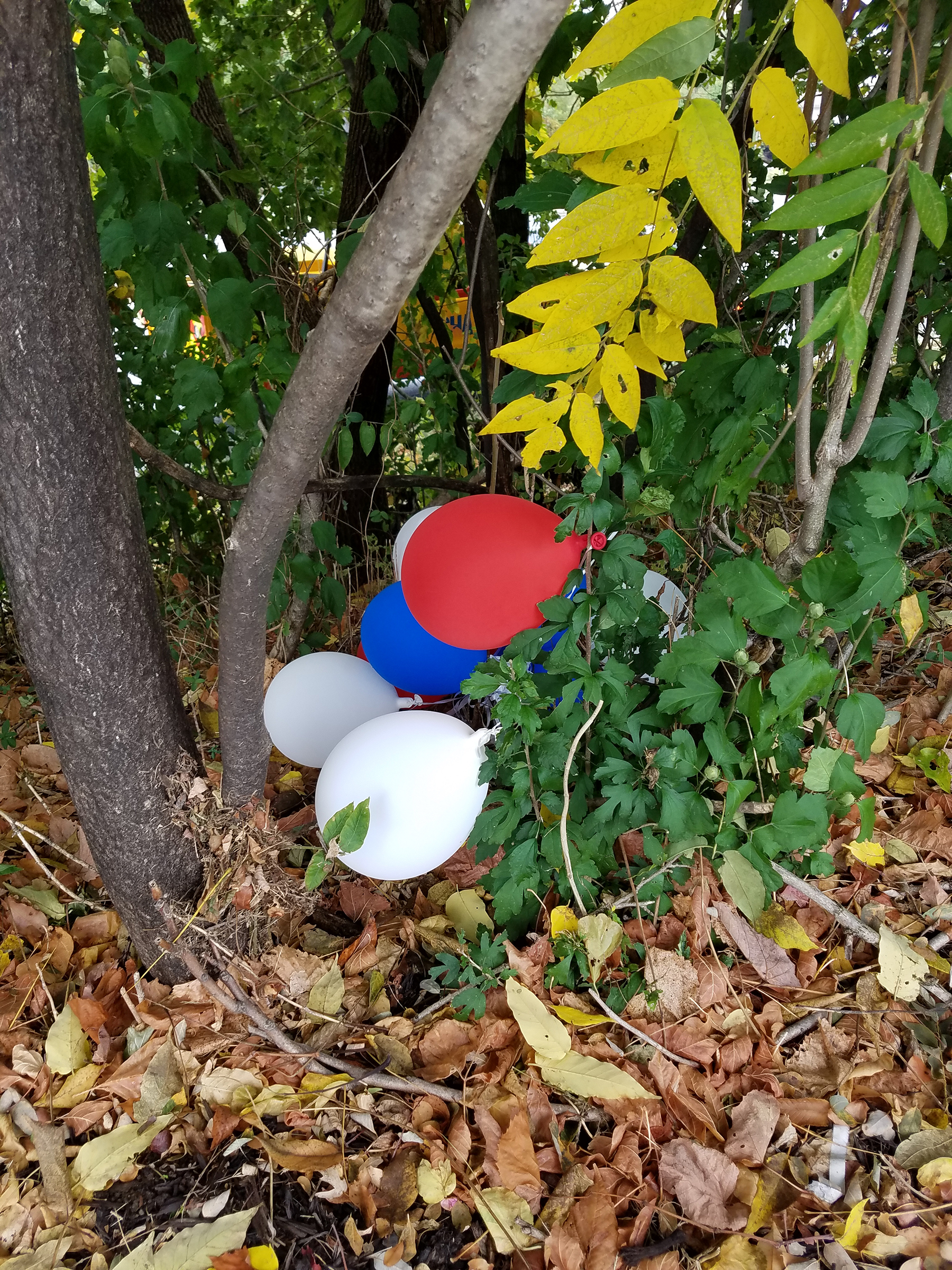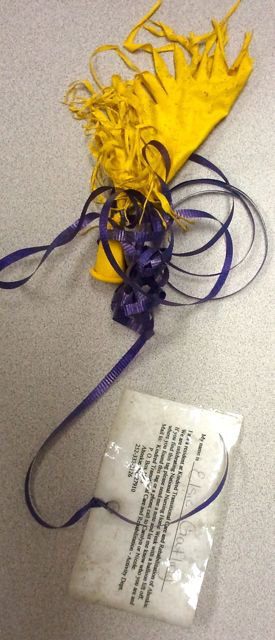















Sources of Balloon Litter
Credit: Steve Raabe.
Types of Balloons
There are two types of balloons released by the public that become litter - latex and foil.
Latex balloons are made with the sap from a rubber tree. During the manufacturing process many chemicals are added to raw rubber including pigments, oils, curing agents and accelerators. While natural latex balloons are considered biodegradable by some, it has been argued that latex balloons may take several months to several years to biodegrade.
According to the study, “Balloon Litter on Virginia’s Remote Beaches,” 56% of all balloons recorded were latex.
Deflated foil graduation balloon on a barrier island in Virginia. Credit: Christina Trapani.
Foil balloons are often incorrectly referred to as Mylar balloons. “Mylar” is actually a brand name for a special type of polyester film.
Foil or metallic balloons are made of plastic (nylon) sheets coated with polyethylene and metallic materials that are sealed together with heat. Experience shows that these metallic inks and paints flake off when exposed to environmental factors leaving a clear plastic balloon.
Over time, foil balloons break up into smaller pieces but are not biodegradable.
Balloon Attachments
Helium-filled balloons often have plastic ribbons and other items attached such as plastic valves, tie-off discs, and clips.
Balloon litter data collected during a two-year study by Clean Virginia Waterways and the Virginia Aquarium & Marine Science Center demonstrated that plastic items including ribbons, valves, tie-off disks, and laminated notes were attached to 58% of balloons found littered in Virginia.
It is also common to find plastic ribbons that have become separated from balloons.
Balloons Travel
Balloons are unique in their ability to travel vast distances.
In 2006, a beach cleanup volunteer in Virginia found a balloon with an attached note indicating that the balloon had been released in Oklahoma, more than 1,300 miles away.
More recently, in February 2018, during a marine debris survey in Hampton, Virginia, a latex balloon with a plastic ribbon and imprinted with a logo from Kansas was found along the shoreline of the Chesapeake Bay. If this balloon was actually released in Kansas, it had traveled almost 1,400 miles.
The negative impacts of balloon litter can occur great distances from their point of release.





